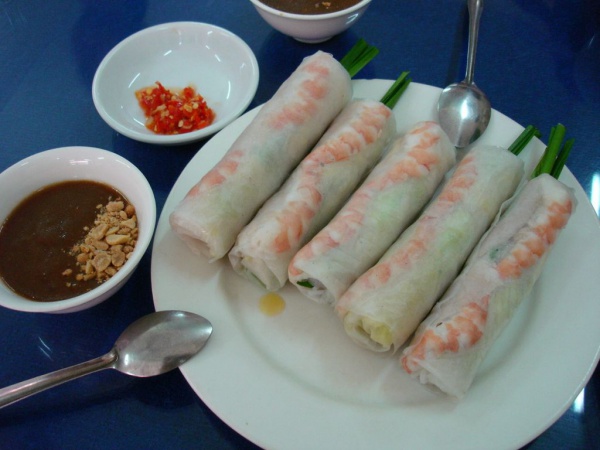Facts About Gỏi cuốn
Gỏi cuốn, often referred to as Vietnamese spring rolls, fresh spring rolls, or rice paper rolls, is a cherished traditional Vietnamese dish. These rolls typically contain a mixture of pork, prawns, fresh vegetables, and bún (vermicelli noodles), all wrapped in delicate Vietnamese bánh tráng (rice paper). Though the dish has its origins in Chinese cuisine, it has been expertly adapted to suit Vietnamese tastes.
Making gỏi cuốn is straightforward: start by dipping a sheet of rice paper in water to soften it, then layer your chosen ingredients on top, and roll it all up neatly. These rolls are usually served fresh and are a popular appetizer in Vietnamese restaurants worldwide. They are often accompanied by dipping sauces such as tương xào (a type of hoisin sauce), peanut sauce, or nước chấm (a fish sauce-based dip).
In Vietnam, the traditional method of hand-making rice paper adds a special touch to the dish. Gỏi cuốn is typically enjoyed in a communal setting, making it a dish that fosters not just delicious flavors but also sharing and togetherness.
Depending on where you are in Vietnam, you might hear these rolls called different names: gỏi cuốn in the south, nem cuốn in the north, and simply "rice paper rolls" in central Vietnam. In Western countries, they are often referred to as salad rolls, spring rolls, or summer rolls.
There are many delightful variations of gỏi cuốn, with different regions and cooks adding their own unique twists. Fillings can range from pork and shrimp to fish, beef, tofu, and various types of sausages.
In Cambodia, a similar dish is called nime chao, while in Japan, it's known as nama harumaki. Despite the different names and slight variations, the essence of the Vietnamese spring roll remains the same—a fresh, flavorful, and communal eating experience.

 Laos
Laos